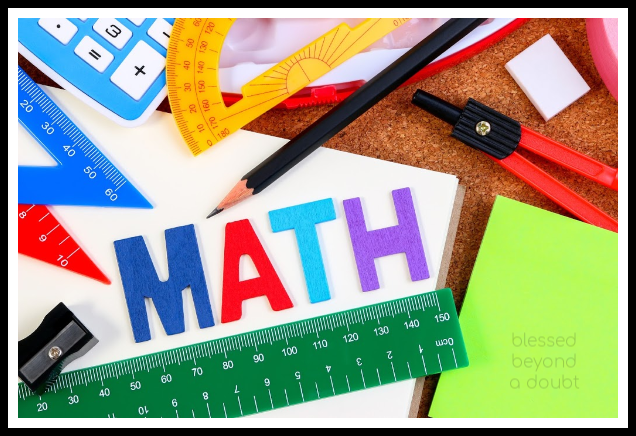This is a sponsored post written by Time 4 Learning.
My son has been struggling with math for a while and I know exactly how he feels as math was never my strong suit. I decided to hop online to search for a program where he could not only improve his skills but also bring some life into a subject he calls “boring.”
After I evaluated my son’s needs and narrowing in on his particular weaknesses, I created a list of things to consider for both him and me when evaluating a program. With so many options out there, where was I to begin? I decided to compile a list of some things to look for in a program. I hope it helps!
1. How Does the Program Teach?
Each child learns differently. My son is a visual learner who likes to be hands on. I find that when he just has a textbook in front of him, he just gets sleepy when reading the text, which typically implies he isn’t comprehending what he is reading. So, I mix things up by using online math programs and visual aids like flash cards. The online lessons are engaging and they offer detailed explanations to complex concepts, which helps build a strong foundation. Another benefit for my son is that he can rewatch the lessons as many times as it takes to achieve mastery of certain concepts. Evaluate how your child learns and find a math program that matches their learning styles, otherwise, the program you pick might not be as effective as you would like.
2. The “Wow” Factor
After speaking at length with my friends, I noticed that all our children had one thing in common when it came to learning math: they became easily frustrated with the material. I think my son’s frustration stemmed from not understanding the lessons. As a result, he just sat there and stared at the page for hours on end. That’s changed. The online math program that I found includes animated activities, instructional videos, and interactive lessons. It’s almost like playing a video game. I knew that I found the right program when I walked into his room one afternoon and he was on his computer practicing math on his own! For once, he’s actually excited about learning. The “wow factor” is something I never took into account before, but have seen a positive change in my son’s learning.
3. Look at the Reviews
When I started looking for a math program, I did a Google search and found various math choices available. I visited the websites, checked out the product, and read the reviews. I’m a sucker for reviews as they can make or break my decision. Getting feedback from real people who have used the product is very useful information. Once you check them out, you’ll get a better understanding of how the program works and if it is something that will suit your child’s needs.
4. Ease of Use
There’s nothing worse than investing your money into something and then finding out that it’s a hassle to operate. If that’s the case, your son or daughter probably won’t use it — or at the very least, not enjoy the experience. And that’s something you definitely want to avoid. You want this experience to be enlightening, engaging, yet challenging. Look at the overall design and gauge whether or not it will help your child achieve their goals in an efficient manner.
5. Teacher Friendly
One thing that concerned most parents was finding a program that we, the parents, could actually use and understand. Depending on your child’s age, you may not have a clue about more difficult math concepts (yes, I totally forgot about linear equations in seventh-grade math). As I said before, I struggled with math, so I didn’t want a program that required me to teach the lessons. Here are some questions you should ask yourself.
- How teacher-intensive is it?
- Does it require much teacher preparation?
- Do you enjoy planning detailed math lessons and then teaching them?
- Would you prefer a program that promotes independent learning?
- Does the program include teaching tools, a teacher’s guide, and instructions?
Some programs offer a teacher’s guide and others provide videos. The one I use offered free demos, so I understood exactly how it worked before purchasing. It also encourages independent learning, which I like because my son often relies on the teacher too much. He simply goes online, logs in, and jumps into his lessons. He can review things he was having difficulty with, or move forward. After each lesson there is usually a quiz; he can take the quiz as many times as needed. If he takes it and doesn’t do well, he simply goes back over the lesson again. I help him when he needs it, but the program is not teacher-intensive, which makes it a better fit for us.
6. Cost
I would be remiss if I didn’t bring up cost because money is almost always a crucial factor. The program I chose is a monthly subscription service and will allow me to put the account on hold or cancel at any time without any penalty. Other programs may charge a lump sum up front. Figure out what you can afford and contact the company; find out if they offer a money-back guarantee in case the program is not a good fit. The majority also offer customer support, and some companies have a parent forum where parents communicate with other people who are going through the same experience.
There you have it, my top six list for choosing the right math program. You may find other things that you want to include in your list and that’s fine, but if you never investigated math programs before, this is a good starting point. Good luck and I hope your children have success in improving their math skills as much as my son did!











Leave A Comment